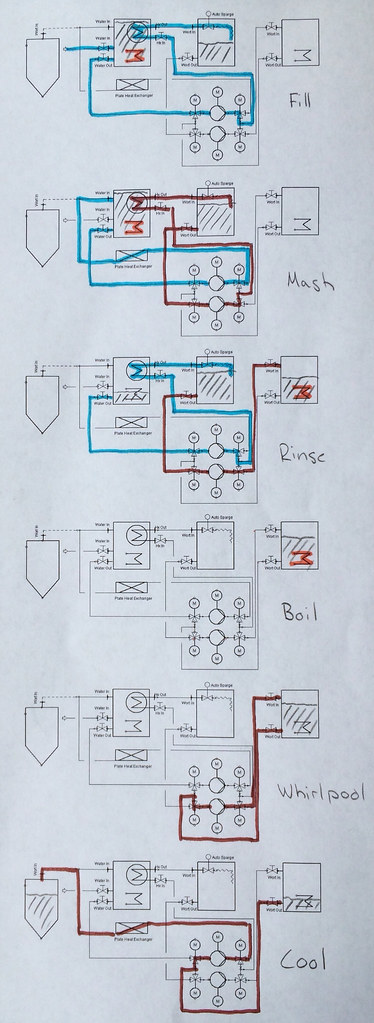laughingboysbrew
Well-Known Member
Curious other peoples kwirky processes to handle hitting their mash temps. For example:
1. Heat HLT to 1-2 degrees above strike temp
2. Transfer to MT (1-2 degree loss)
3. Mash in, heat absorption...results in mash temp
4. (now my HLT is ~10F above mash temp).
I've also thought about synchronizing my strike water temp with HLT...but then after dough in, the temp will drop below desired mash temp and I'll have to try to bring it up.
How do others do it?
1. Heat HLT to 1-2 degrees above strike temp
2. Transfer to MT (1-2 degree loss)
3. Mash in, heat absorption...results in mash temp
4. (now my HLT is ~10F above mash temp).
I've also thought about synchronizing my strike water temp with HLT...but then after dough in, the temp will drop below desired mash temp and I'll have to try to bring it up.
How do others do it?



 LandoLincoln, Can I ask you how long and the diameter, and how tall and how wide your herms coil is? Do you mostly do 10 gal batches or 5's? I tend to do mostly 10, well really 11gal batches and occasionally 5 gal batches. OK I use a keggle and I have a 1/2" ID w/ an 5/8 OD 50 "copper coil long right now not installed or drilled out for the IN and Out valves My coil is 11" dia and 14" high. To fully cover with water I'll need at least 11 gallons, Sound right to you? Or you think I could get away with 40 feet to lower the amount of water to keep coil covered? You seem to know a lot about this.
LandoLincoln, Can I ask you how long and the diameter, and how tall and how wide your herms coil is? Do you mostly do 10 gal batches or 5's? I tend to do mostly 10, well really 11gal batches and occasionally 5 gal batches. OK I use a keggle and I have a 1/2" ID w/ an 5/8 OD 50 "copper coil long right now not installed or drilled out for the IN and Out valves My coil is 11" dia and 14" high. To fully cover with water I'll need at least 11 gallons, Sound right to you? Or you think I could get away with 40 feet to lower the amount of water to keep coil covered? You seem to know a lot about this. 
